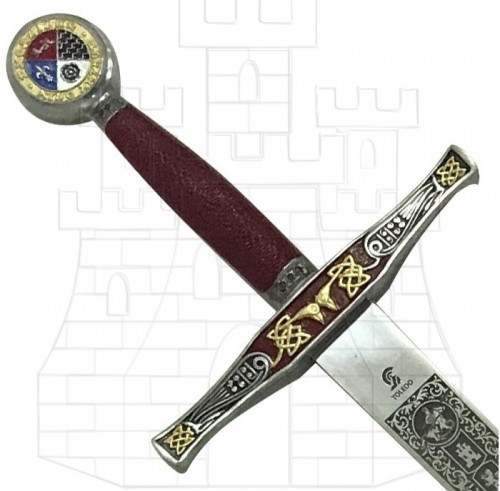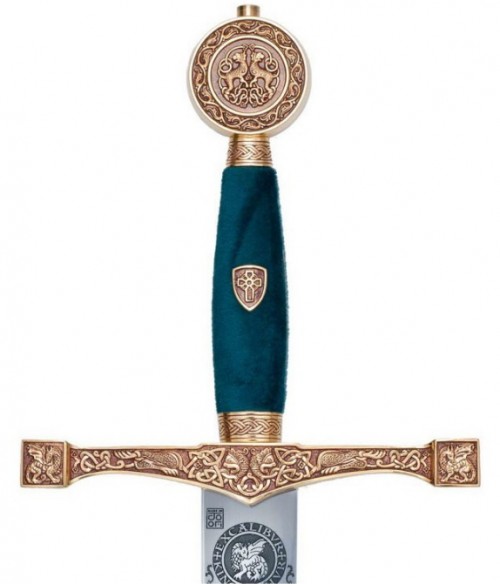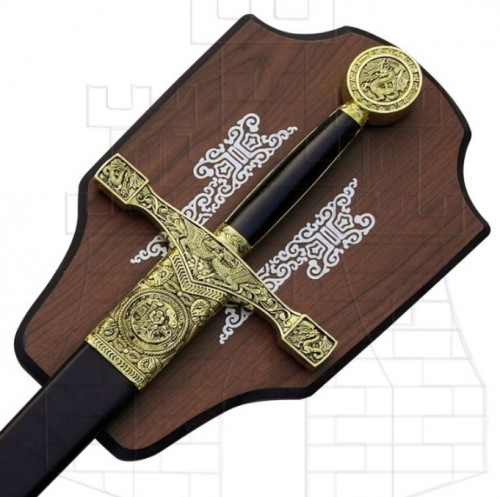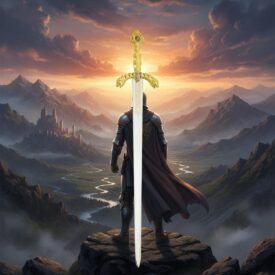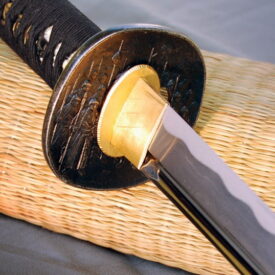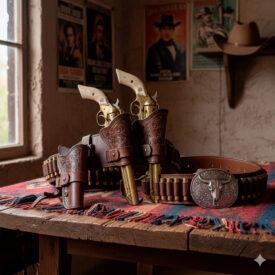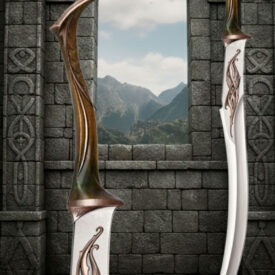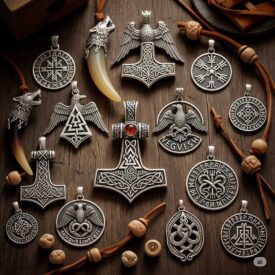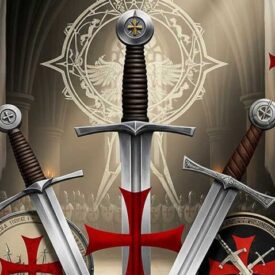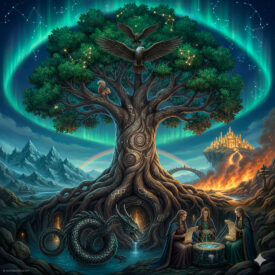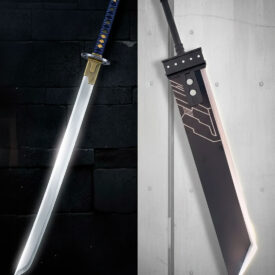Legend has it that a sword capable of changing a kingdom’s destiny is not just metal and blade, but a mirror reflecting the honor, treachery, and hope of a people. Excalibur, King Arthur’s sword, has lived this double life: a weapon in battles, a symbol in stories. In this article, you will explore its multiple origins, its mythical functions, how its iconography evolved with names like Caliburn and Caledfwlch, and why its tale continues to inspire cinema, literature, and collecting.
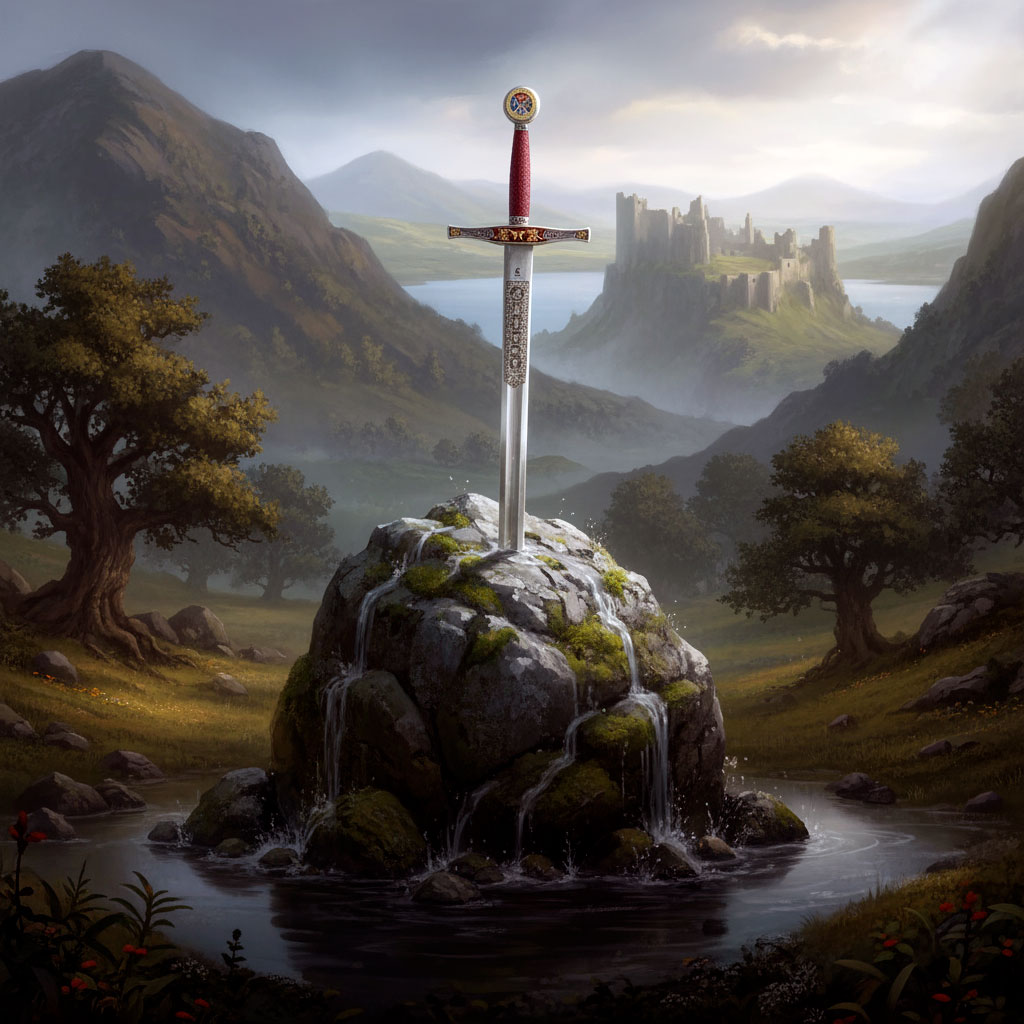
The legend that forges kingdoms
Excalibur’s story is not linear: it branches into traditions that place it in a stone, in the waters of a lake, or in a sorcerer’s forge. Each version adds a different layer of meaning: political legitimacy, magical power, and a sacred bond between the king and his land. Understanding these versions is to delve into the very fabric of medieval Western culture and how societies transmit values through objects laden with symbolism.
Modern fascination with Excalibur stems from both medieval texts and modern reinterpretations. Films, novels, and series have transformed it into a pop icon without erasing its mythical aura. As you read these lines, you will see how classic texts, cinematic adaptations, and contemporary replicas dialogue with each other to keep the legend alive.
Chronology of the legend of Arthur and Excalibur
Chronological summary of the main milestones in the Arthurian tradition relating to Arthur’s birth, the sword Excalibur, and the fate of the kingdom.
| Era | Event |
|---|---|
| Indeterminate Period (Before Arthur’s birth) | |
| Mythical origins of Excalibur | Excalibur is forged on the mythical island of Avalon; some accounts relate it to the Irish sword Caladbolg. |
| Creation of Excalibur by Merlin (version) | In one version, the wizard Merlin is the one who forges Excalibur. |
| Prophecy of the Lady of the Lake | Nimue, the Lady of the Lake, predicts that Excalibur should only be wielded by those who are worthy. |
| Arthur’s birth and youth | |
| Birth of Arthur | King Uther Pendragon, with the help of Merlin’s magic, unites with Igraine (Gorlois’s wife) and from that union, Arthur is born. |
| Arthur delivered to Merlin | Uther delivers the newborn Arthur to Merlin for his protection and education. |
| Upbringing and education | Merlin raises Arthur in a nobleman’s castle alongside Kay, concealing his lineage, and teaches him sciences, arts, and magical knowledge. |
| Uther’s death and the test of the sword | |
| Death of Uther Pendragon | Uther dies without publicly known succession. |
| Appearance of Excalibur in the stone (most widespread version) | Merlin causes a sword to appear, embedded in an anvil on a rock with an inscription declaring king whoever draws it; this occurs when Arthur is eighteen (according to Malory) in Canterbury or St. Paul according to other versions. |
| Failed attempts by nobles | Numerous nobles try and fail to extract the sword. |
| Arthur draws Excalibur | Looking for a sword for Kay, Arthur finds Excalibur in the rock; as he pulls it, a light descends and the sword comes out without resistance. |
| Revelation and confirmation | The inscription is discovered; after returning it and re-drawing it, the nobles recognize Arthur as king and pledge allegiance to him. |
| Temporary withdrawal of Merlin | Merlin considers that Arthur no longer needs him and temporarily withdraws. |
| Arthur’s reign and the Round Table | |
| Rebellion of the nobles | Some nobles rise against Arthur; internal threat to the kingdom emerges. |
| Merlin proclaims legitimacy | Merlin intervenes by proclaiming Arthur as Uther’s son, legitimizing his reign. |
| Defeat of the rebel nobles | Arthur, with the help of Merlin’s magic, defeats the rebels. |
| Creation of the Round Table | To prevent future divisions, the Round Table and its loyal members are instituted; in some versions Merlin establishes it. |
| Marriage and prosperity | Arthur marries Guinevere; years of prosperity and happiness follow; Merlin advises Arthur to be just before retiring. |
| Key events and challenges | |
| Delivery of Excalibur by the Lady of the Lake (alternative version) | In another tradition, Arthur receives Excalibur directly from Nimue; its scabbard protects Arthur from wounds. |
| Excalibur as king-kingdom bond | The sword symbolizes the union between the king, the kingdom, and the sacred, and the chivalric code. |
| Incest and birth of Mordred | Arthur has an incestuous relationship with Morgana; from it, Mordred is born, destined to cause Arthur’s downfall. |
| Lancelot and Guinevere surprised | Lancelot and Guinevere are found naked; Arthur plunges Excalibur between them as a symbol of the conflict between love and loyalty; Lancelot exclaims, “The king without a sword, the land without a king.” |
| The land falls into chaos | The loss or crisis of Excalibur’s symbolism marks the beginning of chaos, famine, madness, misery, and war; the knights’ armor appears corrupted. |
| Quest for the Holy Grail | The quest for the Grail begins; Perceval (and Galahad in other traditions) become heroes; the Grail assumes a symbolic role similar to Excalibur. |
| Arthur drinks from the Grail and is reborn | Arthur drinks from the Grail, recovers, and prepares for the final battle. |
| Recovery of Excalibur | Arthur visits Guinevere in the convent and she returns Excalibur to him, which she had kept. |
| The decline of Arthur and the return of Excalibur | |
| Final Battle of Camlann | Arthur confronts Mordred at Camlann; according to versions, the struggle erupts for different reasons. |
| Mutual death | Arthur mortally wounds Mordred (with Excalibur or a spear depending on the version) and Mordred gravely wounds Arthur in the head. |
| Order to return Excalibur | Mortally wounded, Arthur asks Perceval, Bedivere, or Griflet to throw Excalibur into the lake; initially, there is hesitation, but it is finally done. |
| Return of Excalibur to the Lady of the Lake | A hand rises from the lake, takes the sword, and returns it to the Lady of the Lake, closing the mythical cycle. |
| Arthur taken to Avalon | Arthur’s body is taken to Avalon; tradition holds that he did not die definitively but awaits his return. The legend “Hic iacet Arthurus, rex quondam rexque futurus” emerges. |
Origins and names: Caliburn, Caledfwlch, and the transformation of the myth
The sword’s name changes according to language and era. Geoffrey of Monmouth spoke of “Caliburnus” in Latin; Welsh traditions call it “Caledfwlch.” The transformation to “Excalibur” is a product of translations, adaptations, and the magical intertwining of Celtic and Anglo-Saxon cultures.
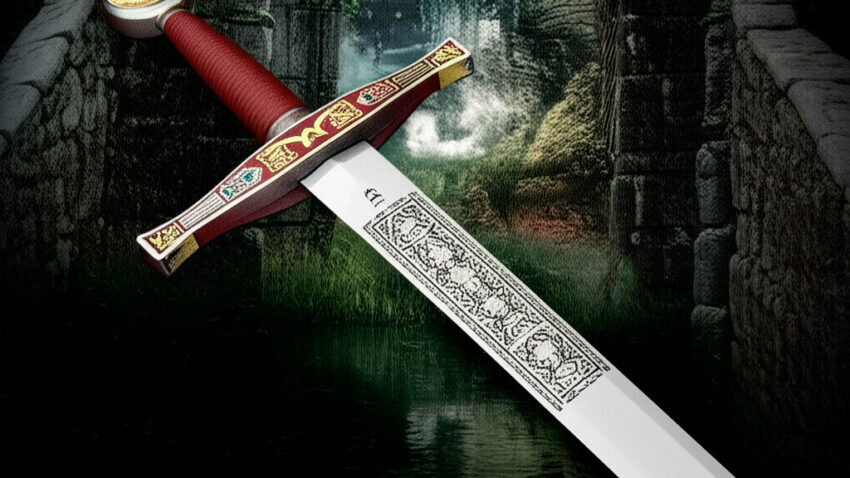
This evolution of the name is not a minor detail: it reveals how legends travel and adapt. The same mythological object can take on different roles in the hands of different narrators. In some versions, the sword in the stone and the Excalibur from the lake are the same; in others, they are two objects, each with its own symbolic meaning.
Comparison: Sword in the stone vs. Gift from the Lady of the Lake
| Aspect | Sword in the Stone | Lady of the Lake (Excalibur) |
|---|---|---|
| Source | Popular tradition and early accounts (e.g., Malory) | Vulgate Cycle and later adaptations |
| Meaning | Political legitimacy: demonstrates right to the throne | Magical power and protection: link to the Otherworld |
| Protection | Does not possess significant protective magic | Magical scabbard that prevents bleeding |
| Symbolism | Visible authority and public proof | Spiritual authority and ritual gift |
The symbolism of Excalibur: sovereignty, justice, and destiny
Excalibur functions as a narrative talisman. When Arthur wields it, his legitimacy becomes visible; when he loses it, the land seems to sicken. The link between sword and kingdom embodies a medieval idea: the well-being of the people depends on the ruler’s virtue. This notion—as political as it is poetic—explains why the sword endures as a metaphor in contemporary culture.
The scabbard deserves special mention: in many versions, the scabbard protects the wielder from mortal wounds. Its theft by Morgana or its loss are tragic triggers that transform the kingdom’s fate. The sword and its scabbard are a binomial: removing one of these elements is to undermine the balance of power.
Excalibur in modern imagination: from parchment to film
Modern adaptations have reinterpreted the symbol, sometimes emphasizing magic, other times politics. John Boorman’s 1981 film, for example, made Excalibur the dramatic axis that articulates myths, betrayals, and redemption. But before and after Boorman, the sword has been a protagonist in countless works, from medieval illustrations to video games.
Shorn of context, the latest film about the legend depicting a young Arthur walking through Londonium’s alleys and finding his destiny through Excalibur directly connects with the classic archetype: the discovery of the sword as a revelation of lineage and duty. Tested by Excalibur’s power, this Arthur must decide what kind of king he will be.
Screen adaptations tend to concentrate and amplify symbols: the sword ceases to be merely an object and becomes a character. Its gleam, its dramatic weight, and its effects on the protagonist’s emotional geography make the audience immediately understand the rules of the narrative universe.
Properties attributed to the sword
- Blinding gleam: in some chronicles, Excalibur shines with the intensity of many torches.
- Invincible edge: the sword cuts any material and defeats other weapons.
- Spiritual bond: its origin from Avalon or the lake connects it to the supernatural.
Key moments: extraction, loss, and return
Arthurian narrative is punctuated by episodes concerning the sword: its extraction, its loss, and its return. Each episode is a moral lesson and a piece of the kingdom’s political puzzle.
The test of destiny
Arthur extracts the sword at a time of need, often to help Kay. The ease with which he draws it is the public proof that convinces the nobles and legitimizes his reign. It is the foundational act: an anonymous youth gains the throne through the simple demonstration of his dignity.
Loss and betrayal
The stolen scabbard, the act of pride, or Arthur’s error leading to the sword’s fracture are recurring episodes. When protection disappears, the king is exposed, and the kingdom’s cohesion crumbles. In film and texts, these episodes are used to show the human fragility behind the legend.
The return to the lake
The final act of casting Excalibur into the lake closes the mythical cycle: the sword returns to its source, the hand emerges, and the legend completes its arcane choreography. This gesture symbolizes the end of an era and the promise of a possible rebirth.
The sword in material culture: replicas and collecting
Excalibur lives not only in texts and on screens: but also in the hands of collectors who seek replicas that evoke the aura of the myth. These pieces recreate historical and aesthetic details to preserve the sense of belonging to the tradition. Contemporary manufacturing strives to balance authenticity and durability.
What to look for in a replica
- Proportions and balance: a replica that feels coherent to the touch respects the historical proportions of the sword type.
- Pommel and guard details: engravings, materials, and paint contribute to aesthetic authenticity.
- Materials: steel for the blade, alloys or woods for the pommel and scabbard according to the desired finish.
- Scabbard finish: in mythological tradition, the scabbard is as important as the sword; a replica that carefully reproduces it increases its symbolic value.
Modern interpretations and contemporary lessons
Excalibur remains relevant because its themes are universal: legitimacy, leadership, sacrifice, and the tension between love and duty. Today, these themes resonate in debates about governance, ethics, and public responsibility. The sword acts as a pedagogical tool that allows us to discuss what it means to be worthy of collective trust.
Modern adaptations invite us to think about the figure of the leader: is power a prerogative of those who demonstrate aptitude or those who demonstrate virtue? Excalibur poses both questions and forces us to look beyond the surface of politics.
Excalibur in arts and media
From Thomas Malory to contemporary video games, the sword has been reinterpreted thousands of times. Each version selects elements: some prioritize the miracle of extraction, others the magic of the Lady of the Lake. In all, the sword functions as a dramatic catalyst and a profound symbol.
Cinematic moments and testimonies of the myth
The latest film about Arthur and Excalibur, which tells how a young man walks through Londonium and discovers his destiny, reiterates a well-known archetype: the hero called by an object. In that narrative, the sword not only decides Arthur’s future but also morally tests him, forcing him to choose between revenge and justice.
The sword as judge
Arthur is judged not by courts, but by his ability to respond to the responsibility the sword imposes. This idea transcends the medieval era and becomes a metaphor for any leader whose authority depends on public trust.
Critical readings: what does the legend tell us today?
The legend of Excalibur offers us several interpretive layers: foundational myth, political allegory, and moral tale. Depending on the approach, the sword can be studied as a literary symbol, as a pedagogical tool, or as an object of cultural market.
If we consider the political dimension, Excalibur suggests that legitimate power must be publicly proven. If we prefer the spiritual reading, the sword is a gift from an Otherworld that legitimizes the harmony between the human and the supernatural. Both readings coexist and fuel the legend’s continued relevance.
Summary of key ideas
- Two origins: the sword in the stone and Excalibur from the lake offer complementary readings of legitimacy and power.
- The scabbard: magical element whose loss triggers tragedy.
- Enduring symbolism: Excalibur encapsulates ideals of justice, leadership, and destiny.
- Cultural presence: from medieval poem to contemporary cinema, the sword remains a reference.
Excalibur is a sword that dwells on the boundaries between history and legend. It traverses centuries to remind us that the objects we value always contain a story that demands responsibility. The next time you see a representation of Excalibur on a screen or in a display case, remember that its gleam is not just an effect: it is the light of an idea that continues to shape how we understand power and justice.
VIEW EXCALIBUR SWORDS | VIEW MOVIE SWORDS | VIEW FANTASY SWORDS
